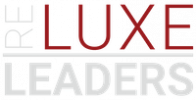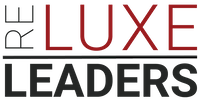Primary keyword: brokerage operating system
Growth exposes the gaps in your firm’s operating model. Volume climbs, but margins swing. Lead flow increases, but response times degrade. Managers are busy, yet no one can articulate—on one page—how cash, capacity, and client experience are controlled week to week. That is an operating problem, not a motivation problem.
Top firms solve it with a disciplined brokerage operating system—one architecture that sets standards, clarifies accountability, and makes performance visible. The objective is simple: protect margin, protect brand, and protect time. Everything below is designed to do exactly that.
1) Financial Control: 13-Week Cash + Unit Economics
If you can’t see cash by week and margin by unit, you’re managing by rearview mirror. A brokerage operating system starts with a rolling 13-week cash forecast and a P&L that exposes unit economics: revenue by source, cost of acquisition, agent productivity bands, and contribution margin by team or office.
Proof: Margin variability is a management problem, not a market inevitability. Firms that operate with tight financial instrumentation and zero-based assumptions consistently outperform peers on operating leverage, per McKinsey & Company analyses across industries.
Action: Build a weekly cash cadence (owner/CFO/ops lead), a standard chart of accounts mapped to unit economics, and a monthly margin review that triggers corrective actions (pricing changes, channel cuts, or capacity reallocation) within 30 days—not quarter-end.
2) Pipeline Intelligence: Demand, Conversion, Capacity
Random lead flow creates random outcomes. Your brokerage operating system must make demand visible from click to close and match it to agent capacity in real time.
What to instrument: speed-to-lead, percentage contacted in under five minutes, appointments set, showings held, offers written, contracts, closings, and cycle time by stage. Layer in capacity per agent (active buyers/sellers under management) and enforce lead throttles when agents exceed thresholds.
Proof: Firms that manage an end-to-end pipeline with clear stage gates and service-level expectations consistently lift conversion and forecast accuracy, a pattern widely documented across sales organizations by Harvard Business Review.
Action: Run a weekly demand review. Kill orphaned leads at day seven, not day 90. Reassign based on SLA breaches. Publish conversion benchmarks by team and enforce remediation plans where variance persists beyond two consecutive weeks.
3) Talent System: Role Scorecards, Ramp, and Tiers
People systems beat personality. Standardize roles, outcomes, and ramp expectations so performance is unambiguous—especially for team leaders and producing managers.
Non-negotiables: role scorecards (3–5 outcomes, not task lists), 90-day ramp plans by role, and production tiers that tie compensation to sustained, documented output.
Proof: Companies that treat talent as a managed system—clear expectations, frequent feedback, consequence management—outperform on productivity and retention, a finding echoed across multi-industry research by McKinsey & Company.
Action: Replace generic job descriptions with scorecards. Publish tier thresholds and pay mechanics. Institute a weekly 1:1 cadence for ramping roles with leading metrics (appointments set, contracts written) rather than lagging GCI.
4) Client Experience Standards: SLAs, QA, and Referral Yield
Brand equals consistency. Define your service-level standards, monitor them, and close the loop with QA. Your brokerage operating system should make response times, update frequency, and post-close follow-through measurable and non-negotiable.
Core standards: sub-5-minute speed-to-lead, same-day status updates on all active clients, weekly pipeline summaries to sellers, and a 48-hour post-closing check-in that triggers referral and review requests.
Proof: Superior, consistent experiences correlate with higher retention and referral rates; leaders that operationalize customer standards capture outsized economic value, as shown in Harvard Business Review research on customer experience performance.
Action: Implement QA sampling of calls, emails, and contract milestones. Track Net Promoter Score quarterly and tie team bonuses to referral yield, not just closed volume. Publish a heat map of SLA adherence by team monthly.
5) Demand Economics: Channel ROI, CAC:LTV, and Creative Testing
Marketing is not a mood; it’s a model. Your brokerage operating system must quantify channel performance and deploy budget dynamically.
Instrument the economics: cost per lead, cost per appointment, cost per closed side, and client lifetime value (including referral value over a three-year horizon). Enforce a minimum CAC:LTV ratio by channel. Kill underperforming segments in 30 days, not after year-end reviews.
Proof: Firms that treat demand generation as a portfolio with clear ROI thresholds allocate capital more effectively and improve profitable growth. This capital discipline is a hallmark of operating-model leaders summarized by McKinsey & Company.
Action: Stand up a monthly creative testing cadence (hooks, offers, formats) with A/B results decided by pipeline impact, not vanity metrics. Separate brand spend from acquisition spend and audit both quarterly.
6) Governance and Risk: Compliance, Data Security, and AI Policy
Risk compounds quietly—until it doesn’t. Treat governance as an operating lane, not a legal afterthought.
Build a compliance calendar (licensing, E&O renewals, trust account reconciliations, MLS/Association audits). Implement multi-factor authentication, role-based data access, and a written data retention policy. Codify an AI use policy covering client data, copyright, and disclosure.
Proof: The average cost of a data breach continues to rise, with operational and reputational damage far exceeding remediation, according to the IBM Cost of a Data Breach Report.
Action: Assign a single executive owner for risk. Conduct a semiannual tabletop exercise on a breach or compliance failure. Require vendors handling lead or client data to attest to security standards annually.
7) Cadence and Instrumentation: WBR, MBR, QBR
If it’s important, it has a meeting and a metric. A brokerage operating system lives or dies by its cadence.
Set a Weekly Business Review (WBR) for pipeline and capacity; a Monthly Business Review (MBR) for margin and channel allocation; and a Quarterly Business Review (QBR) for strategy resets and talent moves. Use a one-page scorecard to drive each, with the same definitions, same visuals, every time.
Proof: Operating models that use short, disciplined loops to surface facts and decide quickly outperform on speed and adaptability—an advantage repeatedly documented by McKinsey & Company.
Action: Publish decision logs with owner, due date, and status. Close at least 80% of WBR actions inside seven days. Escalate unresolved items to MBR automatically.
Implementation: Start Small, Integrate Fast
You don’t need a 200-page manual. You need a minimal, enforceable operating nucleus. Leaders we advise implement in three sprints:
- Sprint 1 (30 days): 13-week cash, unit-economics P&L, weekly demand review.
- Sprint 2 (30 days): role scorecards, SLA enforcement, QA sampling, WBR/MBR cadence.
- Sprint 3 (30 days): channel ROI dashboard, risk calendar, data security baselines.
As discipline takes hold, layer in advanced elements: agent capacity modeling by seasonality, lead scoring, referral yield targets by submarket, and manager-level coaching tied to specific pipeline deficits.
Where RE Luxe Leaders® Fits
RE Luxe Leaders® (RELL™) operates as a private advisory, not a mass-market coaching shop. We build and implement the brokerage operating system with you—financial instrumentation, pipeline governance, talent scorecards, and cadence—so your firm scales without bleeding margin or brand equity. If you want templates, there are plenty. If you want an integrated operating model that your leadership team can run without us, that’s our lane.
Explore how we structure operating sprints, dashboards, and governance frameworks at RE Luxe Leaders®.
Conclusion
Markets will keep shifting. Firms built on personality will keep cycling through new tools. Operators will win. A brokerage operating system forces clarity on cash, capacity, customer standards, and cadence. It makes leadership decisions faster and makes performance visible before it becomes a problem. That is how you protect margin in a high-variance industry—and how you build a firm that outlasts you.





